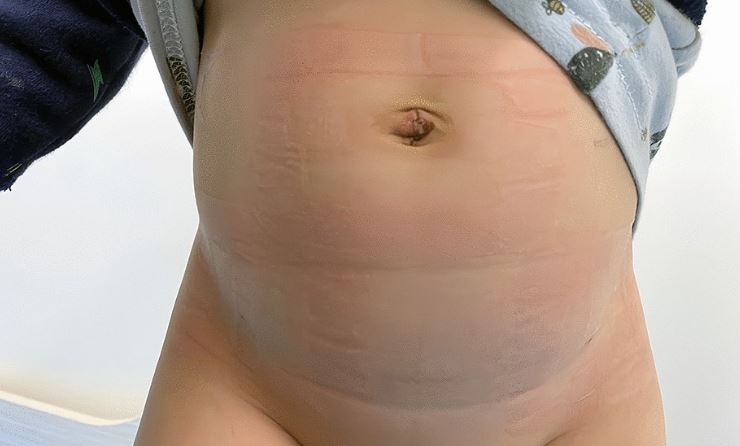Laparoscopic Versus Open Surgical Outcomes Repair For Inguinal Hernia- A Combined Prospective And Retrospective Cohort Study
Abstract
Inguinal hernias are common and have become a common surgical problem. In recent decades, the nature of their treatment has changed and new research is constantly being conducted in this field. To find out the assessment the laparoscopic versus open surgical outcomes repair for inguinal hernia. A combined Prospective and retrospective Cohort study was carried out February 2023 to March 2024 in Department of General Surgery BSMMU. The sample size was two hundred for each arm; patients aged 18 and above without factors pre-disposing to recurrence were included in the study. The subjects were followed up for a period of one year at the end of which primary outcome assessed was recurrence. A number of secondary outcomes such as hematoma, persistent pain and return to regular activity were also assessed. Among the 100 individuals analyzed, 75 (75%) were male patients, with the majority of them falling between the ages of 41 and 55. In contrast to the open group of patients, the laparoscopic group experienced a significant increase in operative time with a highly significant statistical difference (p<0.0001), and the laparoscopic group experienced a significant decrease in post-operative pain score with an insignificant p-value. A significant statistical difference (p<0.005) was estimated among the laparoscopic and open groups of patients in terms of post-operative hospitalization. Returning to normal activities was significantly different for laparoscopic patients relative to the open group (p-value<0.001). With a high level of significance of p<0.001, laparoscopic hernia repair required less time to recover before returning to normal activities than open hernia repair (p<0.005). However, we observed that 90% of the recurrences in the laparoscopic arm were at the hands of surgeons with less than five years’ experience in laparoscopic surgery which was statistically highly significant (P value = 0.00). In the open arm however, the surgeons’ experience did not alter the outcome significantly (P value = 0.341). Thus, laparoscopic repair for inguinal hernia is a safe alternative in the hands of experienced laparoscopic surgeons.
Downloads
References
2. Champault GG, Rizk N, Catheline JM, Turner R, Boutelier P. Inguinal hernia repair: totally preperitoneal laparoscopic approach versus Stoppa operation: randomized trial of 100 cases. Surg Laparosc Endosc. 1997 Dec;7 (6):445-50. PubMed PMID: 9438623.
3. MRC Laparoscopic Hernia Trial Group, Laparoscopy versus open repair of Groin hernia: A Randomised Comparison. Lancet 1999; 345: 185-90.
4. Grant AM. Laparoscopic versus open groin repair: Metanalysis of randomised trials based on individual patient data. The EU Hernia colibrate. Hernia 2002; 6: 2-10.
5. McCormack K, Scott NW, Go PM, Ross S, Grant AM; EU Hernia Trialists Collaboration. Cochrane Database Syst Rev. 2003 ;( 1):CD001785. Review.
6. Liem MSL, van Steensel CJ, Boelhouwer RU, et al. The learning curve for totally extraperitoneal laparoscopic inguinal hernia repair. Am J Surg1996; 171:281-285.
7. Callesen T, Bech K, Kehlet H. Prospective study of chronic pain after groin hernia repair. Br J Surg 1999; 86: 1528-1531
8. Kehlet H, Jensen TS, Woolf CJ. Persistent postsurgical pain: Risk factors and prevention. Lancet 2006; 367: 1618-1625
9. Wantz GE. Hernioplasty controversy. J Am Coll Surg 1998; 186: 372-373
10. Mui WL, Ng CS, Fung TM, Cheung FK, Wong CM, MaTH, Bn MY, Ng EK. Prophylactic ilioinguinal neurectomyin open inguinal hernia repair: a double-blind randomized controlled trial. Ann Surg 2006; 244: 27-33
11. Malekpour F, Mirhashemi SH, Hajinasrolah E, Salehi N, Khoshkar A, Kolahi AA. Ilioinguinal nerve excision in open mesh repair of inguinal hernia--results of a randomized clinical trial: simple solution for a difficult problem? Am J Surg 2008; 195: 735-740
12. Ravindran R, Bruce J, Debnath D, Poobalan A, King PM. A United Kingdom survey of surgical technique and handling practice of inguinal canal structures during hernia surgery. Surgery 2006; 139: 523-526
13. Picchio M, Palimento D, Attanasio U, Matarazzo PF, Bambini C, Caliendo A. Randomized controlled trial of preservationor elective division of ilioinguinal nerve on open inguinal hernia repair with polypropylene mesh. Arch Surg 2004; 139: 755-758
14. Wright D, O'Dwyer PJ. The learning curve for laparoscopic hernia repair. Semin Laparosc Surg 1998; 5:227-232.
15. Poobalan AS, Bruce J, King PM, Chambers WA, Krukowski ZH, Smith WC. Chronic pain and quality of life following open inguinal hernia repair. Br J Surg 2001; 88: 1122-1126.
16. Courtney CA, Duffy K, Serpell MG, O'Dwyer PJ. Outcome of patients with severe chronic pain following repair of groin hernia. Br J Surg 2002; 89: 1310-1314
17. Bay-Nielsen M, Perkins FM, Kehlet H. Pain and functional impairment 1 year after inguinal herniorrhaphy: a nationwide questionnaire study. Ann Surg 2001; 233: 1-7
18. Cunningham J, Temple WJ, Mitchell P, Nixon JA, Preshaw RM, Hagen NA. Cooperative hernia study. Pain in the postrepair patient. Ann Surg 1996; 224: 598-602
19. A prospective comparative study of outcome between open lichtenstein versus laparoscopic repair of inguinal hernia. Choudhary S, Soni H, Mehta JM, Kalia S. Int J Res Med Sci. 2021;9:1417–1421.
20. Recurrences after conventional anterior and laparoscopic inguinal hernia repair: a randomized comparison. Liem MS, van Duyn EB, van der Graaf Y, van Vroonhoven TJ. Ann Surg. 2003;237:136–141.
21. Laparoscopic repair of inguinal hernia: retrospective comparison of TEP and TAPP procedures in a tertiary referral center. Ortenzi M, Williams S, Solanki N, Guerrieri M, Haji A. Minerva Chir. 2020;75:279–285.
22. Four-arm randomized trial comparing laparoscopic and open hernia repairs. Hamza Y, Gabr E, Hammadi H, Khalil R. Int J Surg. 2010;8:25–28.

Copyright (c) 2024 Author (s). Published by Siddharth Health Research and Social Welfare Society

This work is licensed under a Creative Commons Attribution 4.0 International License.


 OAI - Open Archives Initiative
OAI - Open Archives Initiative


